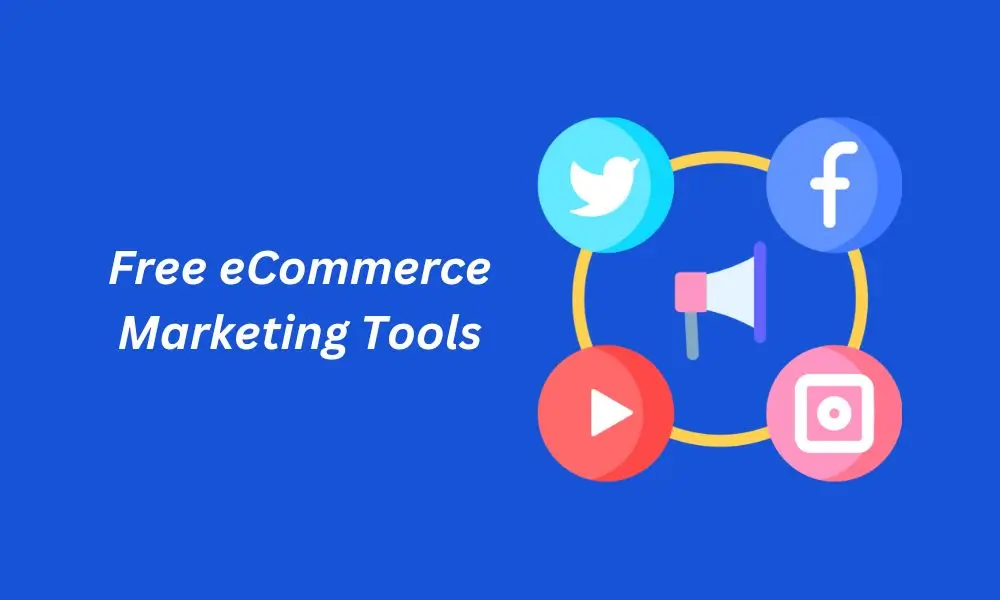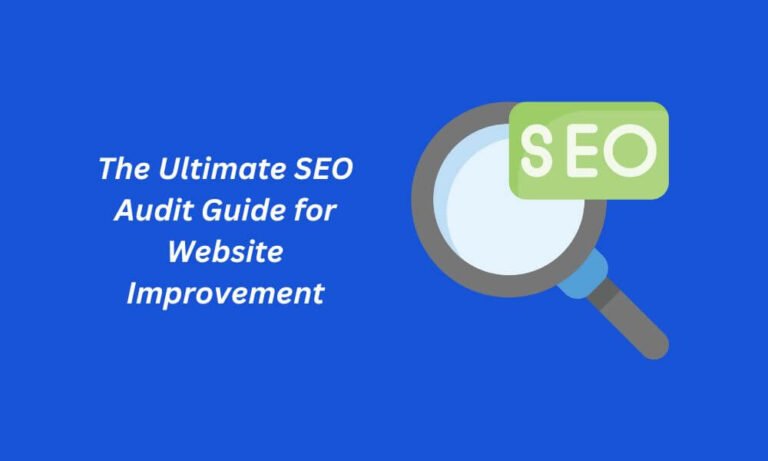Are you looking for ways to market your eCommerce store for free? This step-by-step guide will give you the resources you’ll need to drive traffic without breaking the bank.
Introduction
Starting an eCommerce business can be exciting, but many entrepreneurs face the challenge of marketing their store with little to no budget. The good news is that with the rise of digital platforms and online communities, there are countless ways to market your store without spending a fortune.
In this comprehensive guide, we’ll explore how you can market your eCommerce store for free to drive traffic to your store, attract customers, and grow your online presence organically.
Table of Contents
Why Free Marketing Matters for eCommerce
Many small eCommerce businesses don’t have the luxury of large advertising budgets. However, with the right approach, you can use free marketing techniques to not only reach your target audience but also build a loyal customer base. Free marketing allows you to:
- Build organic traffic and brand awareness.
- Test different strategies without financial risk.
- Scale gradually as your business grows.
How to Market Your eCommerce Store for Free

Let’s dive into how you can implement these cost-effective strategies to market your eCommerce store for free.
1. Leverage Social Media for Organic Reach
Social media is a powerful tool for building brand awareness and driving traffic to your eCommerce store. The key to success on social media is consistency, engagement, and knowing where your target audience spends their time. Here are some specific steps you can take:
a. Choose the Right Platforms
Different social media platforms cater to different audiences. Depending on your niche, certain platforms may be more effective for your marketing efforts:
- Instagram is perfect for visual brands and products like fashion, beauty, and home decor.
- TikTok is a goldmine for trending and viral content, especially for younger audiences.
- Pinterest is ideal for niches like DIY, fashion, food, and home improvement.
- Facebook is excellent for building a community, especially with groups and events.
b. Create Engaging Content
Creating content that captures attention is key to standing out on social media. Consider using:
- High-quality product photos and videos.
- Behind-the-scenes content to humanize your brand.
- User-generated content (UGC) to build trust and authenticity.
- Stories and reels to show quick product demos or features.
c. Use Hashtags and Trends
Hashtags are essential for expanding your reach. Research trending and niche-specific hashtags to help your content get discovered by a wider audience. Don’t forget to participate in viral challenges or trends, especially on TikTok or Instagram.
d. Engage with Your Audience
Reply to comments, engage with followers, and start conversations with your audience. The more you interact with your followers, the more loyal they’ll become to your brand. Social media algorithms also tend to favor accounts that actively engage with their audience, which can boost your organic reach.
2. Join Online Communities
Online communities are great places to share your expertise, build trust, and drive traffic to your store without being overly promotional. Here’s how you can approach them strategically:
a. Find Relevant Communities
Identify forums, groups, or platforms where your target audience hangs out. Some popular places to find these communities include:
- Facebook Groups: Search for groups related to your niche and join the conversation.
- Reddit: Find subreddits relevant to your industry and engage in discussions.
- Quora: Answer questions related to your niche and subtly introduce your brand when appropriate.
b. Offer Value First
Instead of directly promoting your store, focus on building a reputation as a helpful and knowledgeable member of the community. Share tips, answer questions, and provide valuable insights. Once you’ve built trust, you can share your store’s link naturally when it aligns with the discussion.
c. Make Strategic Use of Links
When the time is right, share your website link in a helpful context, such as directing someone to a blog post that further explains a topic. The key is to add value with your link, so it doesn’t come off as spammy.
3. Start a Blog to Drive Organic Traffic
Content marketing through blogging can significantly boost your organic search engine traffic. A well-maintained blog also establishes you as an authority in your niche, fostering trust with potential customers.
a. Pick Topics Relevant to Your Audience
Write about subjects that your target audience is interested in. For instance, if you run a fitness store, write about workout tips, healthy eating, and product reviews of fitness gear. You could also explore how-tos, product comparisons, and buyer’s guides.
b. Optimize Your Blog for SEO
Search engine optimization (SEO) is crucial for driving organic traffic. Follow these basic SEO practices:
- Use relevant keywords naturally throughout your content.
- Write compelling meta descriptions.
- Optimize image alt tags.
- Create internal and external links within your blog.
c. Share Your Blog Posts
Once you’ve published a blog post, don’t just let it sit there. Share it on your social media platforms, in online communities, and on relevant forums. You can even turn your blog posts into engaging videos, infographics, or podcast episodes to reach a wider audience.
d. Consistency is Key
Blogging is a long-term strategy, so it’s essential to publish content regularly. Whether it’s once a week or bi-weekly, staying consistent will help keep your audience engaged and boost your SEO rankings.
4. Build and Leverage Your Email List
Email marketing is one of the most effective ways to nurture leads and keep your audience engaged. Building an email list doesn’t have to cost money, but it can be incredibly rewarding.
a. Create an Irresistible Offer
Offer visitors an incentive to join your email list. This could be:
- A discount code for their first purchase.
- A free downloadable resource, such as an ebook or guide.
- Access to exclusive content or early notifications for new products.
b. Use Pop-ups and Signup Forms
Place signup forms strategically on your website. Use pop-ups, floating bars, or embedded forms on blog pages to encourage signups. Just be careful not to overwhelm visitors with too many pop-ups, as this could drive them away.
c. Send Regular, Valuable Emails
Once people are on your email list, it’s crucial to keep them engaged. Send regular emails that provide value, such as:
- Announcements about new products or sales.
- Behind-the-scenes stories or updates about your business.
- Tips and advice related to your niche.
d. Segment Your Email List
As your email list grows, consider segmenting your subscribers based on their interests or purchase history. Segmented email campaigns are more personalized and relevant, resulting in higher open rates and conversions.
5. Use Influencer Marketing Without Spending a Dime
While influencer marketing is often associated with paid partnerships, there are ways to collaborate with influencers for free or at a very low cost.
a. Reach Out to Micro-Influencers
Micro-influencers (with 1,000 to 10,000 followers) often have highly engaged audiences and may be willing to promote your products in exchange for free samples. Offer them a free product in return for a review or social media post.
b. Collaborate on Giveaways
Partner with an influencer to host a giveaway. This benefits both parties by increasing exposure and followers for both the influencer and your brand.
c. Build Relationships
Before pitching influencers, build a relationship by engaging with their content. Like, comment, and share their posts. When you finally reach out with a collaboration offer, they’ll be more likely to consider it because they’ll recognize you.
Conclusion
To sum it up, to market your eCommerce store for free is not only possible but also incredibly effective if you’re willing to invest time and effort. By leveraging social media, joining online communities, starting a blog, building an email list, and collaborating with influencers, you can drive traffic, build brand awareness, and grow your store without breaking the bank.
The key to success is consistency, authenticity, and providing value. Focus on building relationships with your audience, creating engaging content, and staying active in your niche communities. Over time, these efforts will pay off and help your eCommerce store thrive.
Frequently Asked Questions
1. How can I market my eCommerce store without spending money?
You can market your eCommerce store for free by leveraging social media, joining online communities, starting a blog, building an email list, and collaborating with micro-influencers. These strategies allow you to reach and engage your target audience without a financial investment.
2. What social media platforms are best for promoting an eCommerce store?
The best social media platforms for eCommerce promotion depend on your niche. Instagram, TikTok, and Pinterest are ideal for visually appealing products, while Facebook is excellent for building community through groups. Choose platforms where your target audience is most active.
3. How do I use online communities to promote my store?
Join relevant Facebook groups, Reddit subreddits, and forums related to your niche. Engage with the community by answering questions and providing value. Once you’ve established trust, you can share your store’s link when it’s helpful to the discussion.
4. How does blogging help drive traffic to my eCommerce store?
Blogging helps improve your SEO, making it easier for potential customers to find you through search engines. By publishing informative and relevant content, you position yourself as an authority in your niche, which builds trust and drives organic traffic to your store.
5. What are some free email marketing strategies for eCommerce?
Build an email list by offering a discount or free resource in exchange for email addresses. Use email marketing to keep your audience informed about new products, promotions, and store updates. Sending regular, value-packed emails helps nurture leads and build customer loyalty.
6. Can I collaborate with influencers without spending money?
Yes, you can collaborate with micro-influencers (those with 1,000–10,000 followers) who may be open to promoting your products in exchange for free samples. You can also partner with influencers for giveaways, which benefit both parties by increasing brand exposure.




